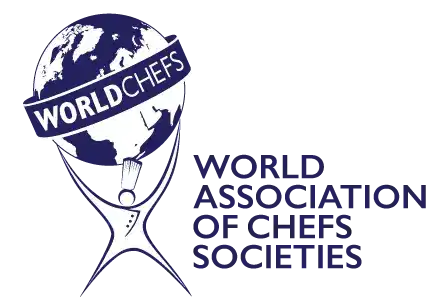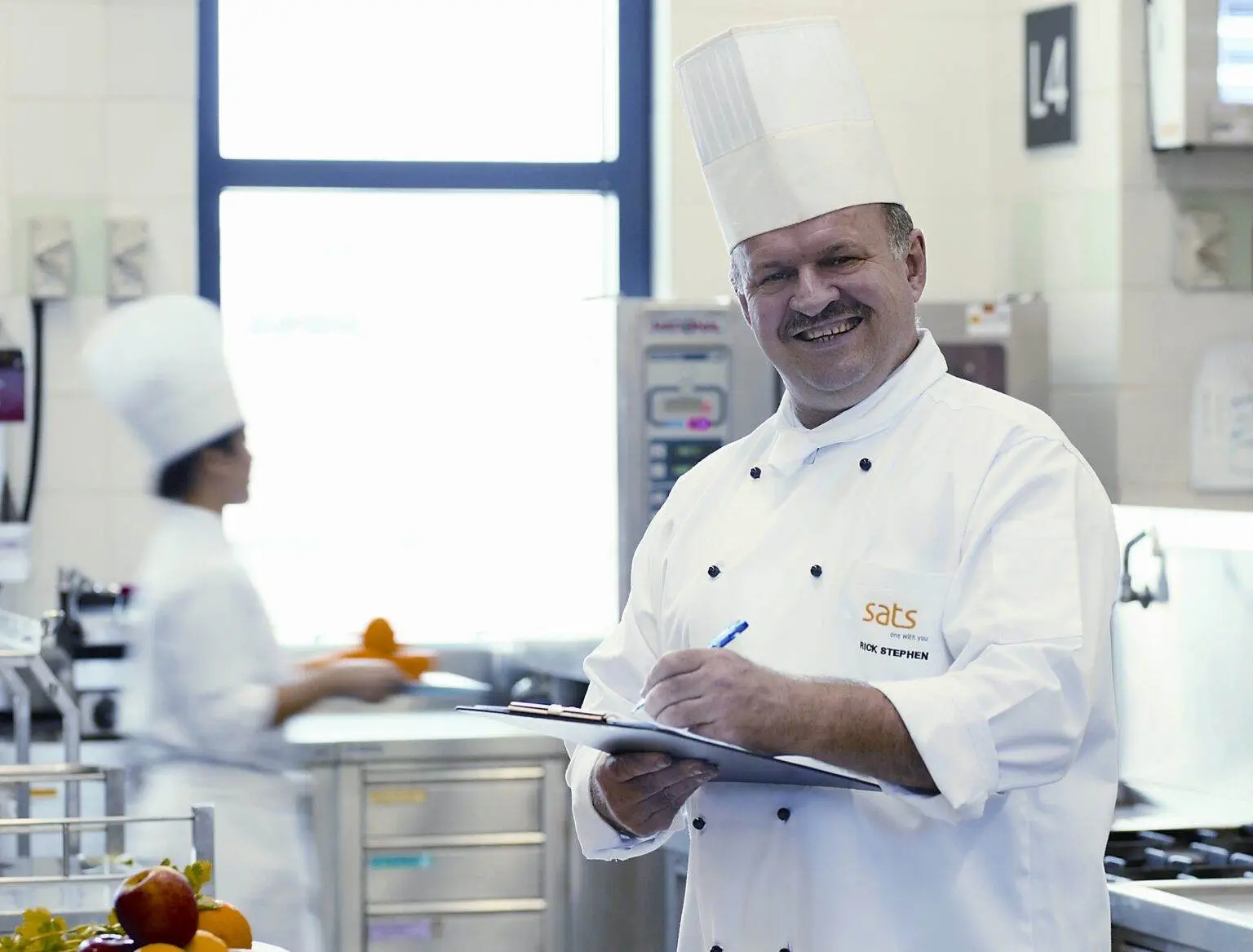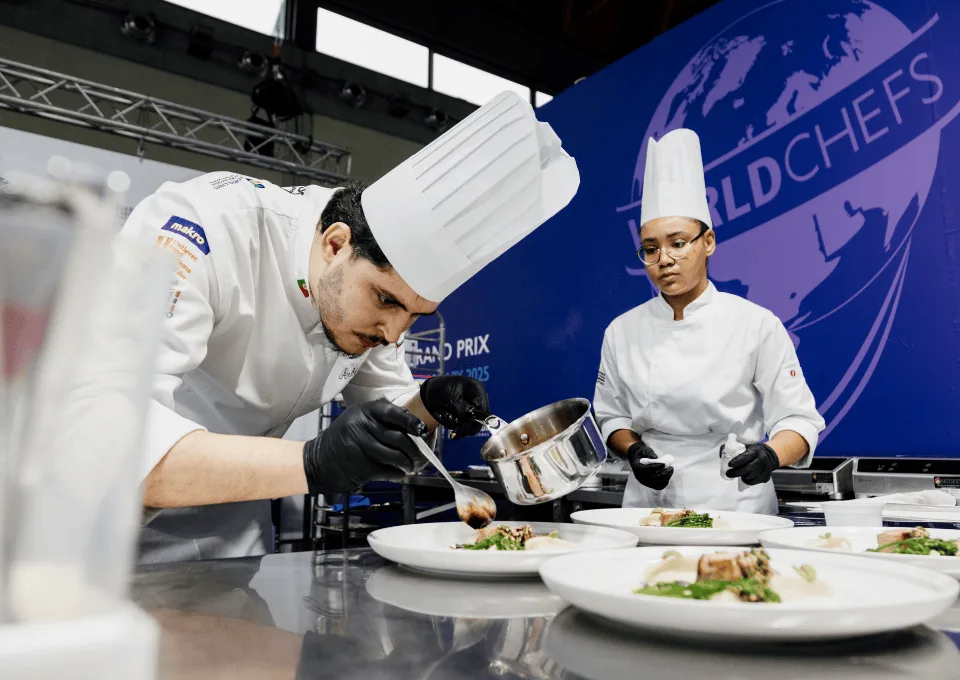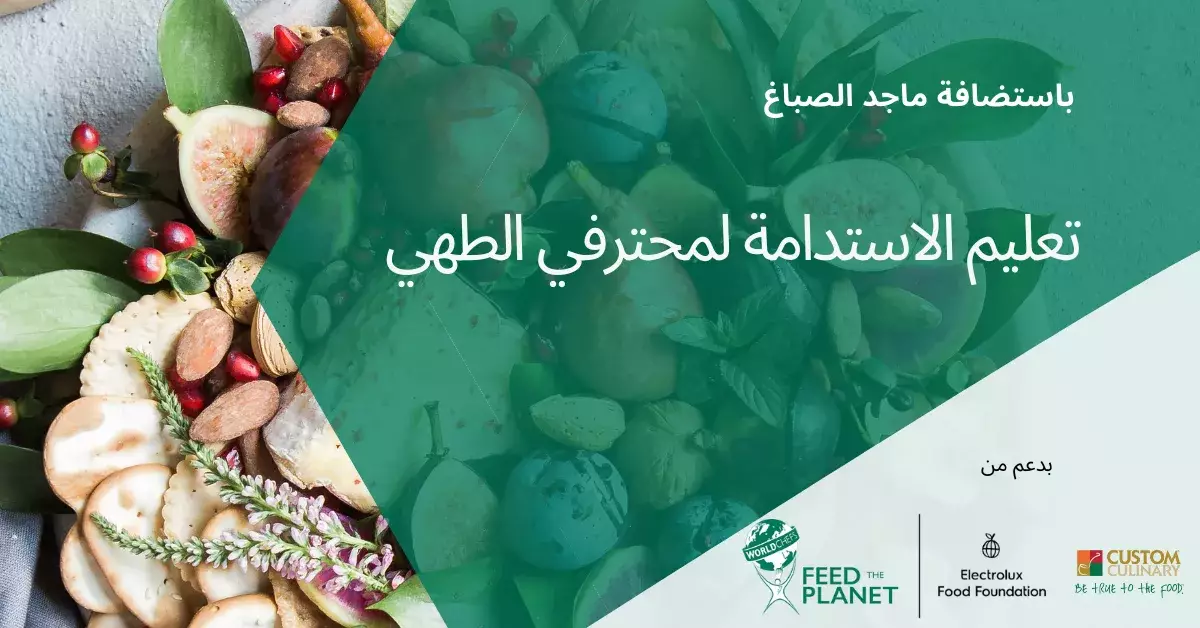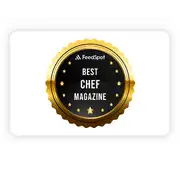An Interview with Rick Stephen
Director of Kitchens for SATS Singapore and Worldchefs Continental Director for Asia.
Rick Stephen is the current Director of Kitchens for SATS Catering Solutions in Singapore. His leadership and knowledge of culinary practice is reflected in his additional role served as Worldchefs Continental Director for Asia. He’s a man who has seen it all – experiencing kitchen life as an entry apprentice, through to completing a Doctorate in Food from Young San University, and leading a 880+ brigade in catering to Singapore Airlines and many other International Carriers. He partners with SFS who looks after the Armed Forces, hospitals and Education centres. Rick further supports joint ventures in kitchens that span China, Japan, Indonesia, Macau, Malaysia, Maldives and India; servicing 400,000 meals per day, when the world is normal, is no understated accomplishment.

“It’s a rare thing to meet someone at the top of their game who has combined both ambition with innovative prowess, willing to sit down and candidly discuss their impressions of their industry – both from career beginnings to present sector challenges.”
A few questions were posed to Rick with the passion to discover how he has implemented innovation into a century’s old profession, and scale production to be systemically viable in a competitive culinary landscape.
What were the greatest challenges facing the industry, when you entered in 1972 as an apprentice?
At the time, I was employed at Noah’s Hotel Melbourne in Exhibition Street (Australia) under the renowned Master Chef Claudio Magris. I had jumped from finishing Year 10 as a 15-year-old straight into work with a 5-day break between ending the year and starting my new career. Claudio had many talents and skills and for myself it was a matter of doing your 10-12-hour day, then if you wanted to learn something, staying behind and doing the extra. The biggest challenge for myself was at first adapting to the hours after having been at school. Each section relied on you to do your part – the pressure of orders coming in from one section was felt as you strived to complete yours. There was also the pressure on working in a kitchen where not many spoke English. This multi-cultural world did afford the pleasure of working with professional chefs and professional waiters
What do you feel are some of the biggest challenges facing mass production of quality product, in today’s times?
The challenge we are faced with now include achieving consistency of the finished product. It’s not a matter of a pinch of salt, a squeeze of lemon juice to adjust the finesse of a final dish; each item needs to be exactly what you may have shown to the customer. Further, there is the challenge of Food Quality Assurance with hygiene and the standard HACCP guidelines to be followed. We must ensure the product we are moving is safe for consumption, with all the backing data, to support our world standard reputation.
What do you predict may be realistic challenges facing the future of large-scale food production for our global community?
Not only is it the current challenges like I mentioned before of food quality, hygiene, international safety standards and consistent finished results that face our future kitchens. is also teaching our future generation to possess a broader mind and not work with blinkers on. We all need to see the final picture and work as a team to achieve a shared vision – such ideals do not just apply to one company but are vital to our profession as a whole. The days of “knowledge is power” are well and truly over in a modern world.
What advice would you give to aspiring chefs looking to grow their business or move forwards in their place of employment?
Naturally everyone these days talks about terms like “sustainability”, “fresh” or “Farm to Plate”, but for me, the first challenge is to be dedicated to your profession. By this I do not mean working 18-hour days yet being paid only 8 hours. Time management is vital so it is important to prioritise work loads, listen to others, and once you have absorbed all that information, to then filter out what you do not think is relevant for yourself, or the place you work in, then move on. It is important to be prepared to make mistakes and be humbled enough to then learn from these mistakes. In our life in the kitchen “Fail to Plan” is synonymous for “Plan to Fail!”
What do you consider it means to be innovative about food?
When I think about innovation, I like to use the term “Culinology”; that is the combination of Science, Equipment and Techniques which make food great. Science is represented by learning how food reacts under different temperatures – for example, how to blast chill correctly or how to regenerate food if appropriate under a full HACCP system. Equipment is innovative if you know what your equipment is designed for and how it can work correctly to get the best out of it with the RnD that companies have already invested in. Lastly, Technique aids innovation by knowing the styles of cooking that are optimal to your purpose. It embraces simple things like knowing how long to cook for, how little to cook, their correct temperatures, food combinations possible, options for styling and finally, food costs alongside an often-forgotten element – food waste.
Why is it so important to nurture and promote the creative energy of developing chefs?
In all business, it is important to have a winning edge, say “a track record” that speaks for you – the ability to deliver what you promise within the time frame allocated. In SATS, we have 27 different nationalities working in the kitchens, encapsulating countless mindsets and skill levels. We have the ability to tap into or draw support from our team by our intentional choice to dedicate time for development, training and testing.
Can you explain the process of taking a new dish for a menu through to large scale production?
It sounds simple, but the secret to success is understanding we are not a stand-alone restaurant. When I had my own restaurant Raphaels in Brisbane, Australia, each 8 weeks I would change the menu – if the dish did not work or was not popular, I would change it out the following week. At SATS, we need to go through a number of set procedures for each dish. It starts with purchasing needed items with the place of production meeting our Food Safety Guidelines. QA will have visited to ensure we have the “thumps up”, then follows comparisons of tasting items; at times, these are blind tasted. Yields must be worked out to assess feasibility, and costing is the final step that ushers in our procurement and marketing goals. As a Chef, I am about quality first and foremost.
We do trials and then test, firstly 10 portions, then 100 portions. Our IPD Department then joins us for further development and along with the QA team we examine a suitable flow process. Tasting sessions occur with a minimum of 5 sessions under real-life business-like conditions. For an airline, we must cook-chill- plates then regenerate them under the same conditions as in an aircraft…We even have a Simulated Aircraft Cabin (SAC) to help test food at 30,000 feet! Those outside the industry may not be aware but our taste buds seek out differences when dining at low humidity and within the cabin pressurisation. An example of outside airline food design, is when we develop food for other vendors. Again, there are numerous trials, we host taste panels to assess and refine…our customer is our end focus and each step of the journey is all designed to improve, refine and celebrate the final food choice for our valued consumer.
How does SATS nurture creative energy and aspiration in its team of developing chefs?
Our SATS slogan is ‘Feeding and Connecting Asia’, however, this has been broadened to include funky, modern euphemisms like “Ghost/Dark/Cloud Kitchens”; basically, a place to start the work that may be finished elsewhere. SATS analyses the global market – not just Airline market. We reach out to many areas way beyond the aircraft industry to determine how to ensure the growth of the business and the future for all our staff.
Interestingly enough, it is the chefs in all our sections that play a vital role in the major development for customers; be that from Airlines, QSR, Export or International hotels. Our boundaries are limited only by our minds, for the wise chef knows the world of food is constantly evolving and so must we.
In summary, it is clear that Rick Stephen is an icon within the culinary profession; he has harnessed art and innovation with the practical success of know how and expertise. The world speaks to his success of partnering with promising individuals and a company that supports growth without the expense of quality. It has been a pleasure to continue business with Rick, supplying his innovation with equipment that helps achieve his SATS’s vision. It is our hope you are inspired, encouraged and find solidarity in the aspirations of SATS and Rick Stephens, to keep your dream for food technology and quality alive. Breathe deep his vision for a satisfied customer who experiences food production at its peak of driven conception to delivery.
This article was originally published by Regethermic.
